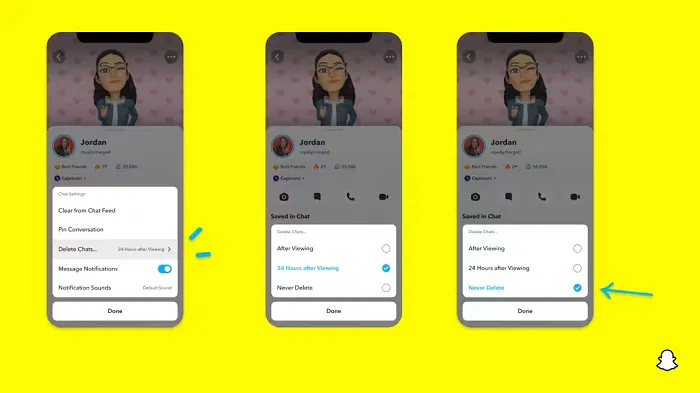SOCIAL
The future of commerce is social. 5 brands getting it right.

Social commerce is the future of online retail. By 2025, Accenture estimates social commerce to more than double to a $1.2 trillion market worldwide. Following the onset of COVID-19, consumers adopted social commerce behaviors, such as discovering, purchasing, and finding support directly on social media apps, at an accelerated rate. Now, brands are embracing these tools to deliver a personalized customer experience on whatever platform customers prefer.
Live shopping, for example, is a powerful way for brands to educate, engage with, and sell to customers in an interactive live stream event featuring brand representatives or influencers. The audience can comment live, ask questions, and even make purchases from links in the live stream. In 2021, the number of people who purchased products in a live stream event increased by 76% globally.
Social media platforms are innovating to meet this growing demand for social commerce. Twitter announced a new Twitter Shops feature that allows brands to showcase up to 50 products on their profiles. Similarly, TikTok is testing shopping features to help brands manage their e-commerce within a second TikTok app. Moving forward, e-commerce brands will have more tools at their disposal to sell directly on social media and provide increasingly seamless customer experiences.
Brands Leading in Social Commerce
As the popularity and accessibility of social commerce grows, these brands have jumped in with both feet to connect with customers where they are:
Charlotte Tilbury
Charlotte Tilbury provides engaging, personalized interactions for its customers on several channels using the latest live stream and meta verse technologies. The cosmetics brand was one of the first to create a digital storefront using virtual reality (VR). In November 2020, the brand launched a 3D digital store where shoppers can explore, shop, and receive personalized recommendations from virtual store associates. Charlotte Tilbury also hosts live events including makeup and skincare tutorials within the digital store.
A new feature, “Shop with Friends,” allows customers to invite friends and family to join a video call and navigate the virtual store together. The technology, similar to that in multiplayer video games, mimics the in-person shopping experience. While in the VR store, customers can also play a game where they navigate the store to find and collect hidden keys.
In addition to this social shopping experience, Charlotte Tilbury holds live shopping events on TikTok. During these events, the brand partners with influencers to showcase and demonstrate its products and even offers exclusive discounts for those who purchase directly on TikTok UK.
Petco
Petco uses live streaming, influencer marketing, and social shops to provide innovative experiences for its customers. The brand partners with Facebook to engage pet lovers and pet parents in shoppable live stream events. Its first live shopping event combined a pet fashion show with a dog adoption drive hosted by actress and model Arielle Vandenberg. Petco and its charitable foundation donated $100,000 to the dog rescue organization that participated, while also building awareness of its pet apparel brands. The event was highly successful, reaching more than 900,000 people and increasing sales by double the cost of the event.
Following that initial success, Petco partnered with more influencers, including Olympian Gabby Douglas, to hold more live stream events. During its live shopping events, Petco dedicated a team to interact with audience members in real time and promote relevant products on the screen. Remote and on-site employees work together to provide shoppable and engaging events.
The brand has also worked with Facebook and Instagram to establish social shops directly on the social media platforms. Additionally, Petco leveraged its existing influencer partnerships to launch a TikTok campaign that reached over 28 million impressions for its pet apparel brand.
KitKat Australia
KitKat introduced the first Facebook Live shopping experience in Australia, “Live from the KitKat Chocolatory,” during the 2020 holiday shopping season. The event featured its chocolatiers demonstrating new products, interacting with special guests, and providing exclusive offers to the audience.
The innovative experience included a shopping feature for live stream viewers to purchase products by simply typing keywords. A viewer could type a prescribed keyword into the comment box, triggering a Messenger notification including a link to purchase the product online. Technologies like this keyword artificial intelligence (AI) tool are becoming more pervasive as social media companies experiment with new ways to purchase products directly on their platforms.
Zimba
Zimba, a global teeth-whitening brand, quickly adopted the Facebook Shops platform to bring its products directly to its customers on the social media platform. With Facebook Shops, Zimba created a digital storefront where customers can discover and purchase products without leaving the app.
To provide seamless customer care, Zimba also enables its customers to contact the brand directly on Messenger and Instagram Direct Message (DM). Customers can ask product questions, get support, and track deliveries before, during, and after they make a purchase on social media. As a result, Zimba realized a 6.7% increase in average order value from buyers on social media compared to buyers on its website.
H&M
H&M was one of the first apparel brands to invest in closing the gap between social media and online shopping. The brand created its own mobile sites that would list apparel and accessories from images in its Tweets that linked directly to purchase the products online. Today, the brand uses Instagram Shopping to promote its latest styles directly on the mobile app and link to products featured in every post.
The brand’s next step is to launch “Shop Live” at its H&M HOME Concept store in Kuwait’s largest shopping mall, The Avenues. With technology powered by Go Instore, customers can access instant live consultations with staff in the store while browsing online. The new tool provides personalized experiences regardless of whether customers choose to shop in person or at home.
Stepping into Social Commerce
Consumer demand has forced businesses to pivot online and social commerce has emerged as the sine qua non for brands looking to not only engage with consumers on social media, but convert them into customers. By leveraging the power of live shopping, digital storefronts, shoppable ads, and social shops brands are able to better meet customer expectations. However, according to a Forrester study, fewer than 30% of social commerce leaders are prioritizing customer engagement, failing to cultivate and nurture customer relationships throughout the social purchase journey, and putting their long-term social commerce growth at risk. One thing’s for sure, brands that don’t adopt social commerce now will fall far behind the competition, while the brands that embrace innovation will reach consumers eager for personalized and engaging experiences.
Finding the right social commerce solution to help you do this can be overwhelming. Download the Buyer’s Guide to Social Commerce Solutions to help guide you in finding the right fit for your brand.
SOCIAL
12 Proven Methods to Make Money Blogging in 2024

 This is a contributed article.
This is a contributed article.
The world of blogging continues to thrive in 2024, offering a compelling avenue for creative minds to share their knowledge, build an audience, and even turn their passion into profit. Whether you’re a seasoned blogger or just starting, there are numerous effective strategies to monetize your blog and achieve financial success. Here, we delve into 12 proven methods to make money blogging in 2024:
1. Embrace Niche Expertise:
Standing out in the vast blogosphere requires focus. Carving a niche allows you to cater to a specific audience with targeted content. This not only builds a loyal following but also positions you as an authority in your chosen field. Whether it’s gardening techniques, travel hacking tips, or the intricacies of cryptocurrency, delve deep into a subject you’re passionate and knowledgeable about. Targeted audiences are more receptive to monetization efforts, making them ideal for success.
2. Content is King (and Queen):
High-quality content remains the cornerstone of any successful blog. In 2024, readers crave informative, engaging, and well-written content that solves their problems, answers their questions, or entertains them. Invest time in crafting valuable blog posts, articles, or videos that resonate with your target audience.
- Focus on evergreen content: Create content that remains relevant for a long time, attracting consistent traffic and boosting your earning potential.
- Incorporate multimedia: Spice up your content with captivating images, infographics, or even videos to enhance reader engagement and improve SEO.
- Maintain consistency: Develop a regular publishing schedule to build anticipation and keep your audience coming back for more.
3. The Power of SEO:
Search Engine Optimization (SEO) ensures your blog ranks high in search engine results for relevant keywords. This increases organic traffic, the lifeblood of any monetization strategy.
- Keyword research: Use keyword research tools to identify terms your target audience searches for. Strategically incorporate these keywords into your content naturally.
- Technical SEO: Optimize your blog’s loading speed, mobile responsiveness, and overall technical aspects to improve search engine ranking.
- Backlink building: Encourage other websites to link back to your content, boosting your blog’s authority in the eyes of search engines.
4. Monetization Magic: Affiliate Marketing
Affiliate marketing allows you to earn commissions by promoting other companies’ products or services. When a reader clicks on your affiliate link and makes a purchase, you get a commission.
- Choose relevant affiliates: Promote products or services that align with your niche and resonate with your audience.
- Transparency is key: Disclose your affiliate relationships clearly to your readers and build trust.
- Integrate strategically: Don’t just bombard readers with links. Weave affiliate promotions naturally into your content, highlighting the value proposition.
5. Display Advertising: A Classic Approach
Display advertising involves placing banner ads, text ads, or other visual elements on your blog. When a reader clicks on an ad, you earn revenue.
- Choose reputable ad networks: Partner with established ad networks that offer competitive rates and relevant ads for your audience.
- Strategic ad placement: Place ads thoughtfully, avoiding an overwhelming experience for readers.
- Track your performance: Monitor ad clicks and conversions to measure the effectiveness of your ad placements and optimize for better results.
6. Offer Premium Content:
Providing exclusive, in-depth content behind a paywall can generate additional income. This could be premium blog posts, ebooks, online courses, or webinars.
- Deliver exceptional value: Ensure your premium content offers significant value that justifies the price tag.
- Multiple pricing options: Consider offering tiered subscription plans to cater to different audience needs and budgets.
- Promote effectively: Highlight the benefits of your premium content and encourage readers to subscribe.
7. Coaching and Consulting:
Leverage your expertise by offering coaching or consulting services related to your niche. Readers who find your content valuable may be interested in personalized guidance.
- Position yourself as an expert: Showcase your qualifications, experience, and client testimonials to build trust and establish your credibility.
- Offer free consultations: Provide a limited free consultation to potential clients, allowing them to experience your expertise firsthand.
- Develop clear packages: Outline different coaching or consulting packages with varying time commitments and pricing structures.
8. The Power of Community: Online Events and Webinars
Host online events or webinars related to your niche. These events offer valuable content while also providing an opportunity to promote other monetization avenues.
- Interactive and engaging: Structure your online events to be interactive with polls, Q&A sessions, or live chats. Click here to learn more about image marketing with Q&A sessions and live chats.
9. Embrace the Power of Email Marketing:
Building an email list allows you to foster stronger relationships with your audience and promote your content and offerings directly.
- Offer valuable incentives: Encourage readers to subscribe by offering exclusive content, discounts, or early access to new products.
- Segmentation is key: Segment your email list based on reader interests to send targeted campaigns that resonate more effectively.
- Regular communication: Maintain consistent communication with your subscribers through engaging newsletters or updates.
10. Sell Your Own Products:
Take your expertise to the next level by creating and selling your own products. This could be physical merchandise, digital downloads, or even printables related to your niche.
- Identify audience needs: Develop products that address the specific needs and desires of your target audience.
- High-quality offerings: Invest in creating high-quality products that offer exceptional value and user experience.
- Utilize multiple platforms: Sell your products through your blog, online marketplaces, or even social media platforms.
11. Sponsorships and Brand Collaborations:
Partner with brands or businesses relevant to your niche for sponsored content or collaborations. This can be a lucrative way to leverage your audience and generate income.
- Maintain editorial control: While working with sponsors, ensure you retain editorial control to maintain your blog’s authenticity and audience trust.
- Disclosures are essential: Clearly disclose sponsored content to readers, upholding transparency and ethical practices.
- Align with your niche: Partner with brands that complement your content and resonate with your audience.
12. Freelancing and Paid Writing Opportunities:
Your blog can serve as a springboard for freelance writing opportunities. Showcase your writing skills and expertise through your blog content, attracting potential clients.
- Target relevant publications: Identify online publications, websites, or magazines related to your niche and pitch your writing services.
- High-quality samples: Include high-quality blog posts from your site as writing samples when pitching to potential clients.
- Develop strong writing skills: Continuously hone your writing skills and stay updated on current trends in your niche to deliver exceptional work.
Conclusion:
Building a successful blog that generates income requires dedication, strategic planning, and high-quality content. In today’s digital age, there are numerous opportunities to make money online through blogging. By utilizing a combination of methods such as affiliate marketing, sponsored content, and selling digital products or services, you can leverage your blog’s potential and achieve financial success.
Remember, consistency in posting, engaging with your audience, and staying adaptable to trends are key to thriving in the ever-evolving blogosphere. Embrace new strategies, refine your approaches, and always keep your readers at the forefront of your content creation journey. With dedication and the right approach, your blog has the potential to become a valuable source of income and a platform for sharing your knowledge and passion with the world, making money online while doing what you love.
Image Credit: DepositPhotos
SOCIAL
Snapchat Explores New Messaging Retention Feature: A Game-Changer or Risky Move?

In a recent announcement, Snapchat revealed a groundbreaking update that challenges its traditional design ethos. The platform is experimenting with an option that allows users to defy the 24-hour auto-delete rule, a feature synonymous with Snapchat’s ephemeral messaging model.
The proposed change aims to introduce a “Never delete” option in messaging retention settings, aligning Snapchat more closely with conventional messaging apps. While this move may blur Snapchat’s distinctive selling point, Snap appears convinced of its necessity.
According to Snap, the decision stems from user feedback and a commitment to innovation based on user needs. The company aims to provide greater flexibility and control over conversations, catering to the preferences of its community.
Currently undergoing trials in select markets, the new feature empowers users to adjust retention settings on a conversation-by-conversation basis. Flexibility remains paramount, with participants able to modify settings within chats and receive in-chat notifications to ensure transparency.
Snapchat underscores that the default auto-delete feature will persist, reinforcing its design philosophy centered on ephemerality. However, with the app gaining traction as a primary messaging platform, the option offers users a means to preserve longer chat histories.
The update marks a pivotal moment for Snapchat, renowned for its disappearing message premise, especially popular among younger demographics. Retaining this focus has been pivotal to Snapchat’s identity, but the shift suggests a broader strategy aimed at diversifying its user base.
This strategy may appeal particularly to older demographics, potentially extending Snapchat’s relevance as users age. By emulating features of conventional messaging platforms, Snapchat seeks to enhance its appeal and broaden its reach.
Yet, the introduction of message retention poses questions about Snapchat’s uniqueness. While addressing user demands, the risk of diluting Snapchat’s distinctiveness looms large.
As Snapchat ventures into uncharted territory, the outcome of this experiment remains uncertain. Will message retention propel Snapchat to new heights, or will it compromise the platform’s uniqueness?
Only time will tell.
SOCIAL
Catering to specific audience boosts your business, says accountant turned coach

While it is tempting to try to appeal to a broad audience, the founder of alcohol-free coaching service Just the Tonic, Sandra Parker, believes the best thing you can do for your business is focus on your niche. Here’s how she did just that.
When running a business, reaching out to as many clients as possible can be tempting. But it also risks making your marketing “too generic,” warns Sandra Parker, the founder of Just The Tonic Coaching.
“From the very start of my business, I knew exactly who I could help and who I couldn’t,” Parker told My Biggest Lessons.
Parker struggled with alcohol dependence as a young professional. Today, her business targets high-achieving individuals who face challenges similar to those she had early in her career.
“I understand their frustrations, I understand their fears, and I understand their coping mechanisms and the stories they’re telling themselves,” Parker said. “Because of that, I’m able to market very effectively, to speak in a language that they understand, and am able to reach them.”Â
“I believe that it’s really important that you know exactly who your customer or your client is, and you target them, and you resist the temptation to make your marketing too generic to try and reach everyone,” she explained.
“If you speak specifically to your target clients, you will reach them, and I believe that’s the way that you’re going to be more successful.
Watch the video for more of Sandra Parker’s biggest lessons.
















You must be logged in to post a comment Login